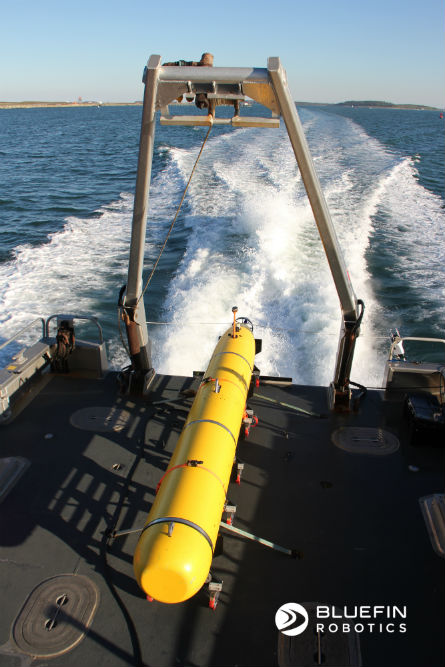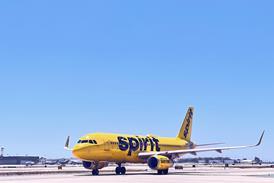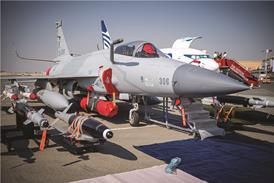The seascape for unmanned underwater vehicle technology is undergoing its most radical change since the US Navy pioneered its development in the early 1960s.
The first remotely operated vehicles were limited to performing deep-sea rescue operations and the recovery of objects from the ocean floor. But the search for new reserves of oil and gas in ever deeper waters to meet the world's energy demand, the need to combat underwater explosives globally and the drive to answer decades-old questions has accelerated the development of more innovative subsea robotics.
Bluefin Robotics (booth 4930) successfully completed the preliminary design review for its new Knifefish UUV in July, a specialised version of its Bluefin-21 vehicle. The UUV will be used for surface mine countermeasure missions as part of a US Navy programme of record.
"We are pleased with Bluefin's ability to produce innovative designs for Knifefish while successfully meeting cost and schedule targets," says Harry Grant, director of Sensors and Surveillance Business Area at General Dynamics Advanced Information Systems. "Bluefin continues to serve as a key contributor supporting the GDAIS Team in passing this important programme milestone."
As part of a Bluefin subcontract with General Dynamics, Knifefish debuted at the Navy League Sea Air Space conference in Maryland in April.
 |
|---|
Bluefin Robotics The Knifefish will help keep personnel out of dangerous situations |
Capt Duane Ashton of the US Navy's Program Executive Office for the Littoral Combat Ship helped the company to unveil Knifefish on the first day of the conference, saying it would be deployed as part of the LCS' mine countermeasures mission package to "detect, classify and identify mines." Knifefish can also monitor its own health in real time.
"The whole goal is to be able to take the Marine or the sailor out of that mine environment, and this is a great start to do that," Ashton said at the event. He added that the algorithms and software on board Knifefish that help it to autonomously detect mines make the missions less operator-intensive than traditional methods such as side-scan sonar.
The Knifefish AUV, scheduled to be in use on the Navy's Littoral Combat Ships by the fiscal year 2015, is a totally autonomous vehicle that can be deployed for up to 16h at a time. Knifefish locates mines planted at any depth using a slow-frequency broadband sensor. The vehicle then relays that information back to the ship for post-mission analysis. Ashton said this sensor makes the vehicle especially adept at locating crowded and buried underwater mines that the Navy cannot currently locate.
"As you go down in [sonar] frequency to the point where the wavelength is near the diameter of the object you're insonifying, you have a resonance that develops; one of the results of that is you get a unique signature or fingerprint from that object," Ashton said. "Now I have the capability of being able not only to detect and classify, but now I have the ability to identify that object.
"The purpose of the mine countermeasures programme is to provide that stand-off, to have the unmanned systems go into the mine field in terms of mine hunting, then be able to identify the mine, report the location of the mine, and then go in and neutralise it."
As a next step, Ashton says the Navy is looking to add more processing on board in order to make Knifefish capable of relaying information in real time. There is also the possibility that future models of the AUV will be able to better search for buried and crowded mines.
"As we move forward with the systems, then we'll have the chance to work on those product improvements," he said. That process includes contracting, development and operational testing.
"I'm impressed with the team, not only the team we have here within the programme, but the team that's made up of industry warfare centres and academia."
This summer, a Bluefin-21 also joined the hunt for Amelia Earhart's downed plane. In 1937, Earhart, the first woman to fly across the Atlantic, took off from Lae, New Guinea, toward Howard Island in the Pacific Ocean. She and the plane disappeared.
Now, The International Group for Historic Aircraft Recovery, which has pieced together clues about the plane's location, is using a Bluefin AUV and a remotely operated vehicle for a preprogrammed search 1,500 meters deep into the ocean. Researchers use sonar to generate a high-resolution acoustic image of the seabed.
"The free-swimming AUV will be our primary search tool," says Ric Gillespie of TIGHAR. "We'll investigate the targets it finds using a tethered, remotely operated vehicle equipped with HD video cameras."
To follow the group's exploits, which include some hair-raising AUV rescues, go to http://tighar.org/Projects/Earhart/Niku7/niku7dailies.html.
In July, OceanServer Technology (booth 5044) received a contract from Florida Keys Community College for its Iver2 AUV. This modern AUV will augment the efforts of students and researchers in ongoing academic initiatives in marine biology, underwater archaeology and marine science. Specifically, the Iver2 will support studies in the university's Diving Business and Technology Program's advanced underwater remote sensing projects.
Also, the AUV will help with the environmental assessment and monitoring of the USS Hoyt S Vandenberg, an artificial reef sunk in 2009 just off the coast of Key West, Florida. The Vandenberg is one of the world's largest artificial reefs, offering divers a unique look at local marine life.
Iver2 comes equipped with side-scan sonar, as well as a high-resolution NBOSI conductivity-temperature sensor and an acoustic Doppler current profiler by Sontek.
In Europe, universities from England, Italy and Greece are teaming up with the Ocean Systems Laboratory at Heriot-Watt University in Edinburgh, Scotland, to develop the PANDORA project, or Persistent Autonomy through Learning, Adaptation, Observation and Replanning. The $3.7 million dollar endeavor will work to develop persistently autonomous AUVs that can recognise task failure and respond to it.
PANDORA's main goal is to improve the inspection, repair and maintenance reliability of vehicles used for underwater monitoring in offshore oil fields. It will focus on structure inspection with sonar and video; cleaning maritime growth with water jets; and finding, grasping and turning valves for oil and gas production.
The project will trial a computational programme on three different AUVs in Scotland and Spain, covering in-lab and deepwater conditions, to test the system on vehicles and monitor their ability to operate in real environments, overcome challenges, accommodate hardware failures and seek alternative missions when idle.
Test-bed assets for the trials include Heriot-Watt's Nessie AUV and Cartesian robot mounted over a test tank and the University of Girona's Girona 500 AUV. The success of the project will be measured by the reduction in the number of times the operator is called to assist a stuck robot during execution of tasks and sequences with noisy sensor data.
Tests will also account for the number of successful automatic recoveries the robot achieves from an execution failure.
"Autonomous robots have produced tremendous benefits but still face limitations," explains David Lane, autonomous systems engineering professor at the lab. "They often get stuck or ask for help and generally only succeed in familiar environments, when carrying out simple tasks. Over the next three years, our challenge is to develop a computational programme which will enable robots to recognise failure and have the intelligence to respond to it."
- Additional reporting by Magnus Bennett
Source: Flight Daily News




















